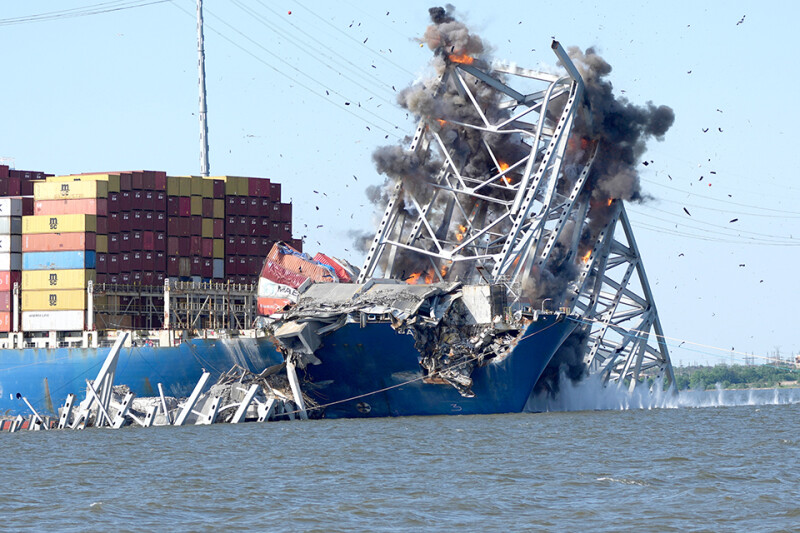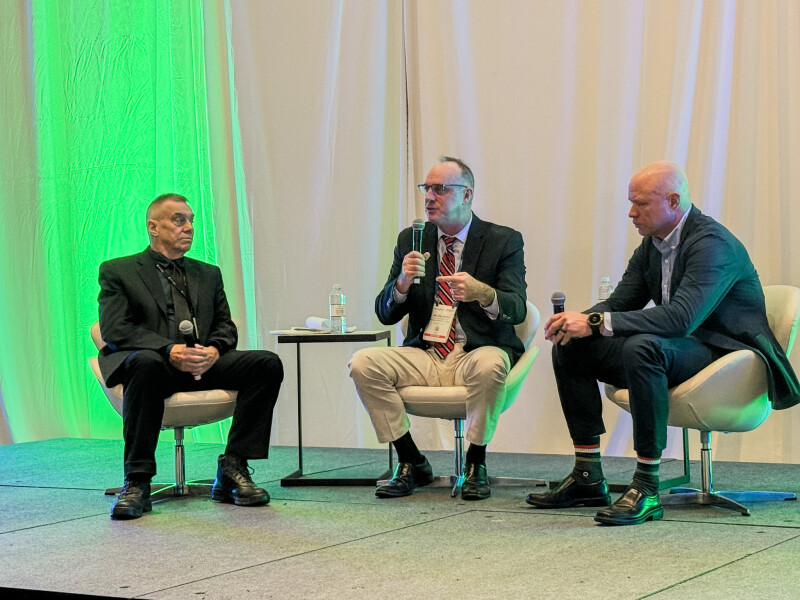March 26th The catastrophic collapse of the Shipping Alliance and Francis Scott Key Bridges in Baltimore made clear the vulnerability of America's ports.
When an 8,600-foot continuous truss span collapsed, killing six workers, it was the end of a “series of bad decisions that is typical of any disaster,” said Morgan, Glosten's chief executive. Fanberg said during a panel discussion Tuesday. International Work Boat Show.
But the weeks that followed “were a testament to everyone involved getting the Port of Baltimore back up and running,” Fanberg said. Fanberg's marine architecture and engineering firm was involved in the restoration work, and by mid-June the main waterway was fully open.

The 948 Dali, bound for Sri Lanka from Baltimore, experienced an electrical outage and its engine automatically shut down as it approached a bridge over the Patapsco River. This alliance left the Dali stranded beneath the collapsed span, leaving approximately 50,000 tons of steel debris underwater.
A Coast Guard-led unified command was formed to deal with the crisis that closed major ports in the Mid-Atlantic. Within two days, Donjon Marine got involved, asking Glosten for construction and salvage knowledge.
A similar integrated command response was put in place two years ago after the container ship Ever Forward ran aground near a bridge in the Chesapeake Bay, said former Port of Baltimore CEO and current William Doyle, executive director and CEO of the Port of Baltimore Dredging Contractors, recalls. America.
“This type of coordination around command and control is important,” Doyle said.
In some ways, responders were lucky when the Key Bridge collapsed, he said. Cashman Dredging and Marine Contracting Company. It recently completed dredging work in the Chesapeake Bay and was loading up equipment in Baltimore. As such, it can be deployed almost immediately to help clear emergency channels around bridge blockages.
Similarly, the accident site was only about 2.5 miles from the former Bethlehem Steel Mill, close enough from the Strait for debris to be stored and eventually shipped by ship for recycling, Doyle said. Ta.
The National Transportation Safety Board has determined that the Dali experienced a power problem before its early departure and before it hit the bridge around 1:30 a.m., but officials have not yet concluded the accident. The FBI investigation continues as well.
The NTSB's interim report said maintenance issues and operating conditions on the ship may have affected the electrical system.
“There's no question that vibration was an issue,” Fanberg said, a typical problem on older ships.
Questions from the audience included how such “material conditions” would be enforced on foreign-flagged vessels calling at U.S. ports.
“Pilots do their best” to do their due diligence and ask the captain and crew about the ship, Fanberg said. He says they had no way of knowing about the Dalis' problems until now.

“When a ship enters a U.S. port, we assume the ship is usable,” Doyle said.
Other questions were also raised about the suitability of U.S. port infrastructure in the post-Panamax era of ultra-large container ships.
In Baltimore, “the right infrastructure was built just 10 years after containerization was introduced,” Doyle said. On the other hand, a practical upper limit may already exist, he added. “How big will cruise ships in the U.S. get?”
In addition to the need for a new bridge across the Port of Baltimore, Doyle expects Congress will use this opportunity to address other long-neglected bridge spending.
He predicted that “Congress is going to appropriate money to replace that bridge,” likely leading to a “huge spending bill” in the 2025 Congress.
October 24th Grace Ocean Private The Singaporean companies that owned and operated the Dali, Ltd. and Synergy Marine Private Limited, agreed to pay a $100 settlement to the U.S. government. According to the Justice Department, the settlement money “will go to the budgets of the U.S. Treasury and several federal agencies directly affected by the alliance or involved in the response.” Legal claims from the state of Maryland, the city of Baltimore, the families of the deceased highway workers, and others remain unresolved.


